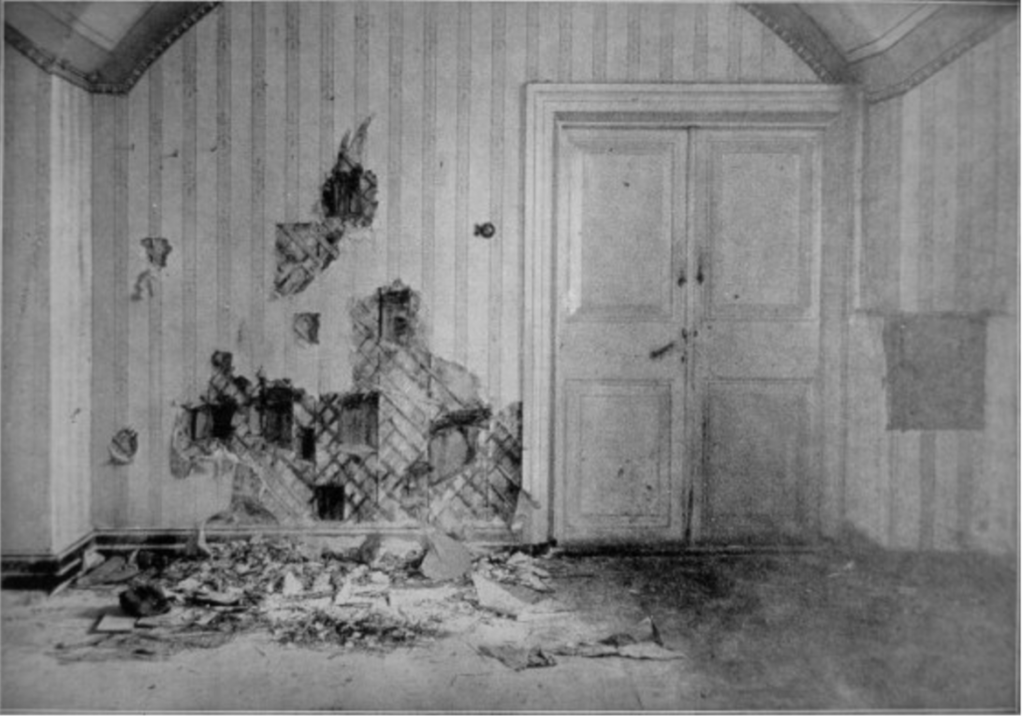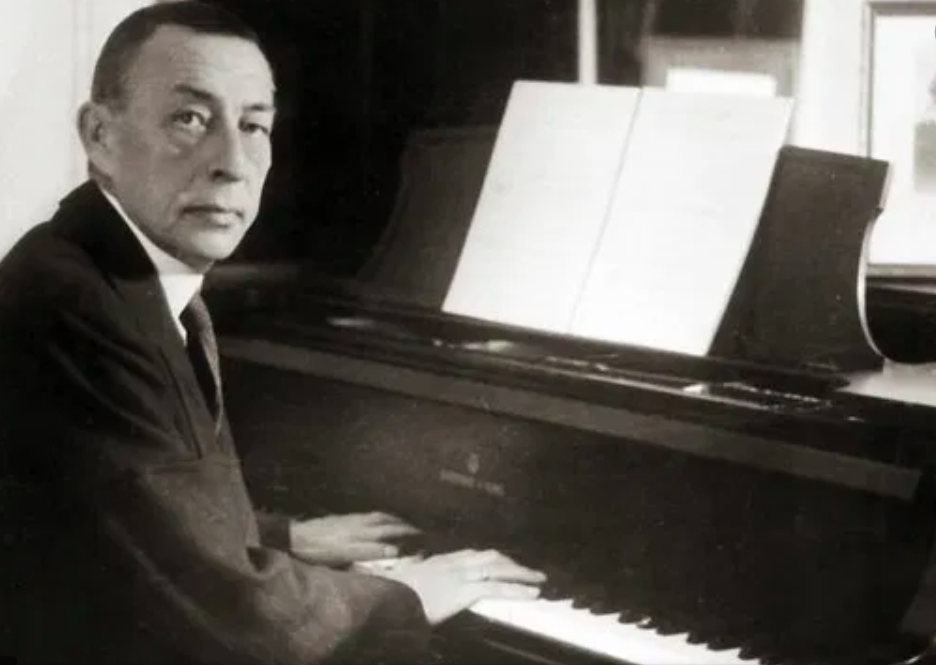

Researched and Written by:
Meghan Maiya, MA
The Last Days of the Romanovs
The Imperial Family
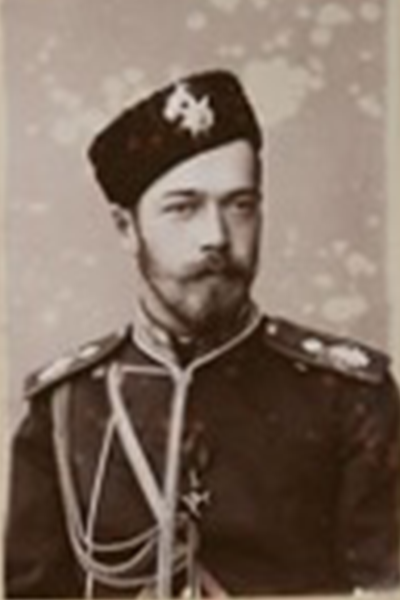
Tzar Nicholas II
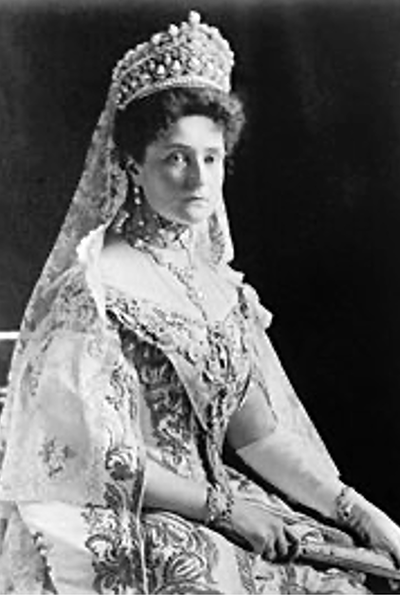
Tzarina Alexandra

Olga

Tatiana

Maria

Anastasia

Tsarevich Alexei
Historical Context
Nicholas became Tzar Nicholas II when he was 28 years old and was ill prepared. Tsar Nicholas II Romanov—born Nikolay Aleksandrovich in 1868—had grown up in the shadow of his father, the bearded, burly Alexander III. His son worshipped his father, even though Alexander openly regarded Nicholas as a weakling and nicknamed him “girlie.”2
His father died young (in his forties) and had held off teaching Nicholas II anything because he felt there was plenty of time. Unfortunately, that was not the case. Although unprepared, Nicholas was very intelligent, had great powers of self-control and restraint, had an aptitude for languages, was kind and charming, and was a “true gentleman.” He was reported to have had striking baby blue eyes that did not tell the secrets of what lay beneath. He was traditional in his rule. He hated modernization and followed only his own counsel and that of his beloved wife, Tsarina Alexandra. They were very dogmatic and ruled oppressively, the same way his father had. Tsar and Tsarina believed they needed to protect the absolute sovereignty of the Romanovs, their divine right to rule, and with it the inheritance of their precious only son.1
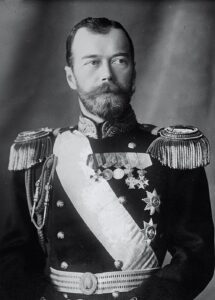
REVOLUTION
Revolutionary fervor ran deep. Since the devastating famine in the early 1890’s, the inability of the government to provide sufficient relief fanned revolutionary fervor in the country. In cities, the appalling exploitation and squalor suffered by workers triggered waves of protests and strikes. 2
The pressures of industrialization were worsened by the actions of Tsar Nicholas II. Reigning from 1894, Nicholas inherited Russia’s colossal empire and the autocratic ideas of his family, the Romanov dynasty. In 1905 the tsar’s popularity was ebbing due to continuing domestic problems as well as an unpopular war with Japan. During a peaceful demonstration in St. Petersburg in January 1905, protesters were fired on and killed, an event that triggered months of protests. 2
The revolt continued throughout the year. In the fall of 1905 Tsar Nicholas finally compromised. He issued the October Manifesto, which laid the groundwork for the protection of civil rights, the creation of a constitution, and the establishment of a parliament called the Duma. The first soviet “worker’s council” was set up. These concessions appeased enough of the revolutionaries for Nicholas to stay in power.2
Many others viewed the October Manifesto as too little, too late. Inspired by the writings of Karl Marx (1818-1883), who foresaw a revolt in which laborers would become the ruling class, revolutionary figures, such as Lenin, continued to agitate against the tsar. 2
Just under a decade later, unresolved social and economic tensions were magnified by Russia’s entry into World War I in 1914. Located near the front line with Germany, Petrograd (the former St. Petersburg) swarmed with soldiers and hungry workers, who toiled in the shadow of the city’s lavish palaces. Exhausted by the war and food shortages, by early 1917 Petrograd was a powder keg of despair and anger with those in power. 2
What happened next was not just a revolution, but multiple revolutions; a rejection not just of the state, but of all figures of authority: judges, policemen, government officials, army and navy officers, priests, teachers, employers, landowners, village elders, and patriarchally minded fathers and husbands. 2
In the bitter cold of February 1917 – International Women’s Day – thousands of women protested in Petrograd, demanding more generous rations, an end to the war, and the right to vote. Others joined in – hungry workers, male and female. The protest snowballed in the last days of February. Red flags and banners began to appear, calling for the downfall of the monarchy. 2
The forces of the tsar opened fire, killing protesters. The demonstrations began to turn into a full-scale revolution as angry protesters broke into the barracks of the city’s Pavlovsky Regiment. Rather than attack them the soldiers joined the protesters, some even firing on their own officers. 2
The authorities were, by now, almost deprived of military power in the capital. The expansion of the revolt led some to assume that events were being orchestrated by socialist parties. In fact, they were driven by many individuals: soldiers, workers, and students, people whose names never made it into the history books. 2
On February 27 a crowd came to the Tauride Palace—the seat of the Duma—looking for leaders. A workers’ council, known as a soviet, was elected. The majority of the leaders of the Petrograd Soviet had no intention of taking power. Instead, they wanted the Duma leaders to form a government in line with the doctrine laid down by Karl Marx: That in a country such as Russia, the first step toward a socialist order would be taken by bourgeois democrats. On March 1, a provisional government was formed. The soviet pledged to support it as long as it adhered to a comprehensive list of democratic principles. 2
Nothing less than Tsar Nicholas’s abdication, meanwhile, could save the war campaign against Germany—all his senior generals told him so. The Duma also called on him to stand down. On March 2/15, 1917, Nicholas II gave up the throne. The end of the monarchy was marked by scenes of rejoicing throughout the Russian Empire. Symbols of monarchical power—emblems, coats of arms, double-headed eagles, and tsarist statues—were destroyed. 2
Although the Provisional Government saw itself as an interim body to guide the country through the war and the ongoing political upheaval, it nevertheless enacted significant reforms. Led by Prime Minister Prince Georgy Lvov, a liberal reformer, and Minister of Justice Aleksandr Kerensky—the lone socialist and only government figure who was also a member of the soviet—it swept away the old laws of the tsarist regime against freedoms of speech and assembly. Russia was transformed into what Lenin called the “freest country in the world.” 2
As Lenin observed World War I from exile in Switzerland, the Germans observed the deteriorating domestic situation of its enemy Russia. They proposed to allow Lenin to return to Russia in late March 1917 in the hopes that his presence would lead to more chaos and further weaken the country. Fellow Russian exiles viewed Lenin as a traitor for making a deal with Russia’s enemy, but Lenin, his wife, and a group of fellow émigrés made the voyage anyway. They boarded a “sealed train” that would travel through Switzerland to Sweden. On arrival at Petrograd’s Finland Station on April 3, Lenin undermined the Provisional Government by declaring a 10-point program—his April Theses (later published in Pravda, the Bolshevik newspaper)—for a second revolution based on “power to the soviets.” 2
Germany’s gamble that Lenin would increase destabilization in Russia paid off. Later, British prime minister Winston Churchill assessed the move: “They turned upon Russia the most grisly of weapons. They transported Lenin in a sealed truck like a plague bacillus.” 2
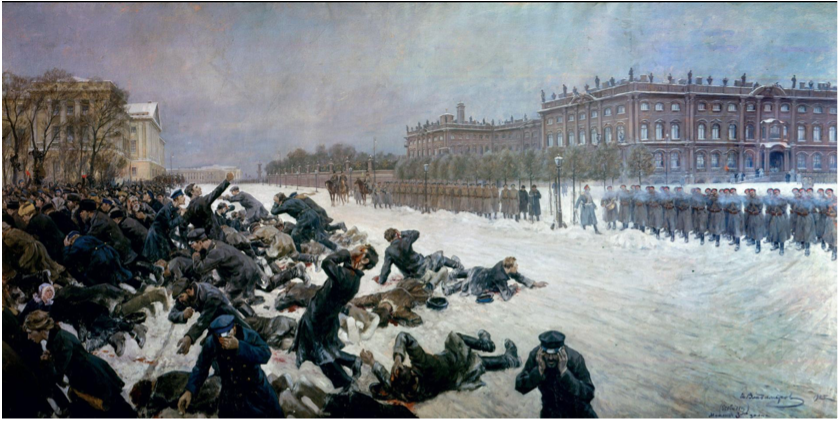
St. Petersburg: The city was renamed Petrograd in 1914, at the beginning of World War I, because it sounded less German, was then named Leningrad after the death of Vladimir Lenin in 1924, and again became St. Petersburg in 1991 when the Soviet Union collapsed.
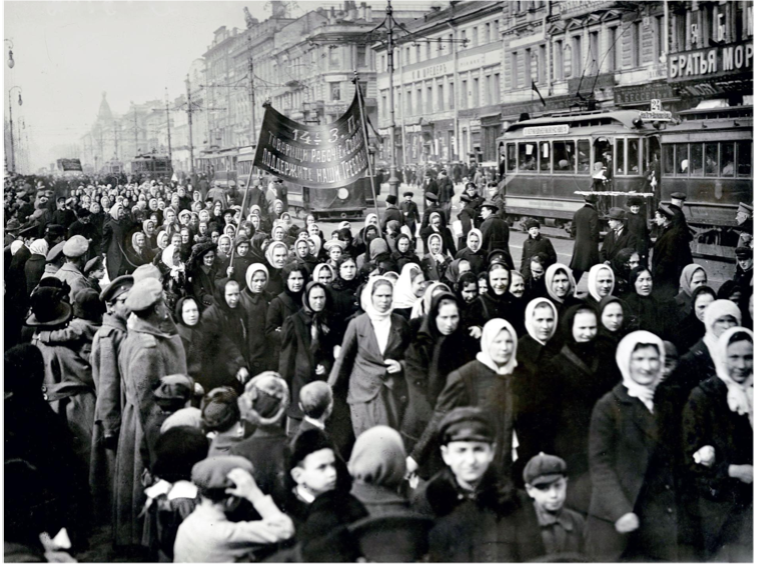
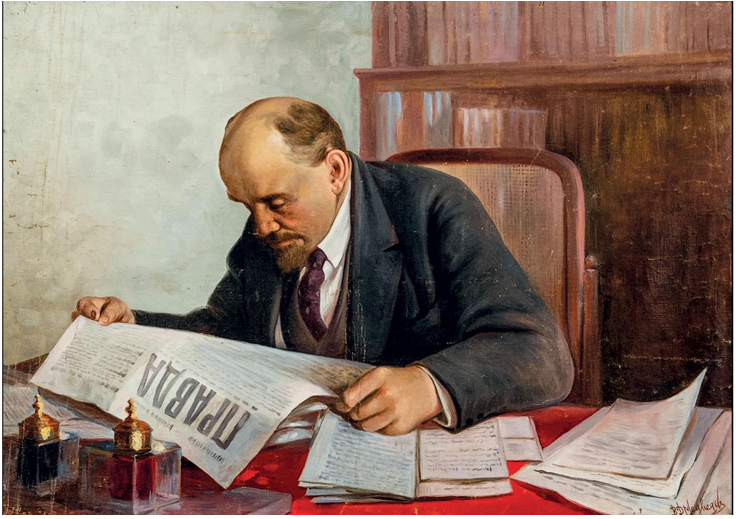
ABDICATION & EXILE:
In 1917, The February Revolution prompted Nicholas to abdicate the throne “for the good of Russia” on March 2/15, 1917.1 From Tzar Nicholas II’s diary:6
March 13, Tuesday
I went to bed at 3:15 as I had a long talk with [General] N. I Ivanov, whom I am despatching to Petrograd with troops to restore order. We left Mogilev at five in the morning. I slept till 10 o’clock. The weather was cold and sunny. During the day we passed through Viazma, Rzhev, and Likhoslavl at 9 o’clock.
March 14, Wednesday
During the night we turned back from Malaia Vishera, as Liuban and Tosno seenied to be occupied by the rebels. We went to Valdai, Dno, and Pskov, where I stopped for the day. Saw Ruzski.(General N. V. Ruzski, Commander of the Northern Army). He, with Danilov and Savich, dined. Gatchina and Luga, too, reported to be in possession [of the rebels]. Shame and disgrace. Failed to reach Tsarskoe, [Selo] but my thoughts and feelings are always there. How hard it must be for poor Alix [Empress] to go through all these events alone. Lord help us.6
March 15, Thursday
In the morning Ruzski came and read his very long direct-wire talk with Rodzianko. According to this, the situation in Petrograd is such that a Ministry of the Duma would now be powerless to do anything, for it has to contend with the Social-Democratic Party, represented by the workers’ committee. My abdication is required. Ruzski transmitted this talk to Headquarters, and Alexeev sent it on to all the commanders-in-chief. By 2 o’clock replies were received from them. The gist of them is that in order to save Russia and keep the army at the front quiet, such a step must be taken. I have agreed. From Headquarters has been sent a draft of a manifesto. In the evening Guchkov and Shulgin arrived from Petrograd, with whom I discussed the matter, and I handed them the signed and altered manifesto. At 1 o’clock in the morning [16th] I left Pskov, with a heavy heart because of the things gone through. All around me there is treachery, cowardice, and deceit.6
March 16, Friday
I slept long and well. Awoke far beyond Dvinsk. The day was sunny and cold. Talked with those near me about yesterday. Read a great deal about Julius Caesar. Arrived at 8:20 at Mogilev. All ranks of the Staff were on the platform. Received Alexeev in the car. At 9:30 I went over to the house. Alexeev came with the latest news from Rodzianko. It transpires that Misha [Grand Duke Michael] has abdicated. His manifesto ends with a four-tail formula (Universal, direct, equal, and secret suffrage. There was no definite time set for the Constituent Assembly) for the election of a constituent assembly within 6 months. God knows who put it into his head to sign such stuff. In Petrograd, the disturbances have ceased-if it would only remain that way.6
The family was immediately placed under house arrest at the Alexander Palace at Tsarskoe Selo, Nicholas and the family thrived in this setting, enjoying each other without the pressures of politics.1
After 6 months, the family was then moved to Tobolsk and housed at the former Governor’s House, along with “only” 39 courtiers and servants (see photo to the right). They were also allowed to bring with them their precious cameras, photo albums, diaries, letters, their 3 dogs, and vintage wines. They were kept in Tobolsk for 8 months.1 Below are letters Anastasia wrote while in exile.7
Letter from Anastasia Nikolaevna to Tobolsk 25 March 1918
For the moment, thanks be to God, we’re living well. A detachment of Red Army men came from Omsk, up till now they have behaved themselves, and on the whole, all is calm.
In the first week of Lent, we fasted and they let us go to Church. At all the Services through the week we sang by ourselves, as it is difficult to get choristers to come with such frequency for services at home.
Lessons for us as usual, everyday, morning and evening. The weather has been marvellous these last days and we often sit on the balcony, glad of the change of scenery, looking at passers by. Just now, I am sitting and writing by the window. It’s already 7:45, but still light out. The Church bells are ringing, reminding us of the cathedral at Tsarskoe.
We’ve become regular janitors. We cleared the snow out of the yard where we go for walks, and now it’s not so dirty. Then we sometimes chop and saw wood it all goes well with us.
Tobolsk 24 April 1918 (7 May) 6:00 P.M.7
My dear, sweet Mashka,
Truly He is risen!
We were so terribly happy to get news [in your letter], and [we] shared our impressions! I apologize for writing crookedly on the paper, but this is just my stupidity. What we rec. [re¬ceived] from An. Pav. was very sweet; [sends] regards, etc., to you. How are you all? Sashka and so on? You see, of course, that there are always a huge number of rumors; well, and you understand how hard it is and one doesn’t know whom to believe and sometimes it’s all so disgusting! As they only tell you the half of it, but not the rest, and that’s why we think he’s lying. Ks. Mikh. [Ksenia, actually Klavdia, Mikhailovna] Bitner comes and spends time with the little one. Aleksei is so sweet; he eats and tries so (remember how it was at the little bench when you were here?). We take !turns having breakfast with Aleks. [Aleksei] and making him eat, although there are days when he eats without needing to be told. Dear ones, in our thoughts we are with you all the time. It is terribly sad and empty; I really don’t know what possesses me. The baptismal cross is with us, of course, and we got your news. So. The Lord will help and does help. We arranged the iconostasis terribly nicely for Easter, all in spruce, which is the way they do it here, and flowers. We took pictures. I hope they come out. I continue to draw, not too badly they say; it’s very pleasant. We swung on the swing; boy, did I laugh when I fell off so splendidly! Yes, quite! I told the sisters so many times last night that they are sick of hearing about it, but I could tell it again and again, although there is no one left to tell. In general, there is a whole trainload of things to tell you all. My Jim1 has caught cold, and coughs, so he sits at home and sends regards. There was such incredible weather! One could shout from the pleasantness of it. Strangely enough, I tanned more deeply than anyone else, a regular Arab woman!? But these days I am boring and not pretty. It’s cold, and this morning we froze, although we were inside, of course, and didn’t go out. I very much apologize: I forgot to extend good wishes to all you dear ones on the holiday; I kiss you all not thrice but heaps of times. My dear, all of us thank you for the letters. There were demonstrations here too, but they weren’t much of anything. We sit here together as always, but you are missed. Tell precious Papa that we are very grateful for the figs; we are savoring them. I apologize, of course, that this is such a jumbled letter; you understand that my thoughts are flying and I can’t write everything and so put down whatever comes into my head. Soon we’ll go for a walk; summer hasn’t come yet and, nothing is blooming, but things are starting to come up.
You know, I want to see you so much it’s sad. I go for walks and then I’m back. It’s boring whether you go out or not. I swung. The sun came out, but it’s cold and my hand can barely write.
Your regards were transmitted to us word for word, and we send you a big thanks and the same. In the evenings we sit around; yesterday we told fortunes using the book. You know which one. Sometimes we work.
We do everything they ask.
A kiss to you [Maria] and to you dear ones and much else I won’t enlarge on, for you will understand. Thought about it already some time ago. Russa [?], although sweet, is strange and makes one angry, for she doesn’t understand and simply can’t bear it. Once I was almost rude, a real cretin. Well, it looks as if I’ve written enough silliness. Right now I’ll write some more, and then I’ll read it later, during free time, that is. For now, good-bye. I wish you the best, happiness, and all good things. We con¬stantly pray for you and think, Help us Lord. Christ be with you, precious ones. I embrace all of you tightly and kiss you.
- [Anastasia]
- Jim (Jimmy), Anastasia’s pet dog. After the imperial family was executed, the dog was also apparently killed. White Guards discovered the dog’s corpse, together with various smail objects that had belonged to the Romanovs and their suite, in a mine near Yekaterinburg.
From Tobolsk they were transported by bone-rattling tarantass, a crude springless carriage, to Tyumen where they were put in First-Class compartments on the train to Omsk, the junction of two major lines on the Trans-Siberian Railway. Where would be transported next… east (across Siberia and on to Japan) or west (to Moscow and a public trial)? The family was unsure of their destination and harbored hopes of a rescue. After several hours of sitting idle in Omsk, they were re-routed back to Tyumen and further on west to their final destination of Ekaterinburg (sometimes spelled Yekaterinburg) to be handed over to the Bolsheviks (officially, “The Ural Regional Soviet”) where they were signed for like luggage.1
This was the worst place the Imperial family could be. Ekaterinburg had become a major hub for Bolshevik activity. It was filled with 10,000 soldiers and deserters, convicts and exiles (sent there by the Romanovs). All wanted revenge upon “Nicholas the Bloody.” The city itself, once the jewel of the Ural Mountains, was in a state of siege: its infrastructure collapsing, its citizens in the grip of a mounting reign of terror. AND, the “Whites” – the counter revolutionary and monarchist forces (the Czechs) – were rapidly approaching from the east.1
The Romanov family arrived in Ekaterinburg on April 30th, 1918 and were put into “detention under surveillance” (imprisoned) at the Ipatiev House or what was to be known as, The House of Special Purpose (see photo to the left). Initially, only Tzar Nicholas, Tzarina Alexandra, and Maria arrived with 3 servants. They were given one bedroom, one bathroom, and a sitting room (where the servants slept). The Tzar was greeted as “Citizen Nicholas” indicating that all titles and protocol were no longer to be respected in Ekaterinburg as they had been in their previous places of house arrest.1
A few weeks later, on May 23rd the rest of the children were sent. They had had to stay back because Alexei suffered from Hemophilia and was too sick to travel. Once the rest of the children arrived, the family was then given access to 5 rooms to share between 11 people (7 family members, 4 servants) and 3 dogs. The rest of the servants that accompanied the children from Tobolsk to Ekaterinburg were not allowed to get off the train. They had to wait to be dispersed. Most were sent to prison and a few were released to freedom.1
A crew of 100 men were brought in, soon after, to erect a tall fence around the house to isolate the family. It was heightened after a bit for more isolation and security. Then, a second palisade was built that was even higher and it created a sort of fortress all around the house, just 14 feet away from the windows. Next, all the windows were sealed shut (except for one very small ventilation window, a fortochka). Then all the windows were white washed so the family could not see outside. They were only allowed outside in the garden for exercise twice a day for 30 minutes. Once, it was so hot and stuffy inside the house, Anastasia attempted to stick her head out the little ventilation window. She was shot at by a sniper. He missed. The bullet ricocheted off the window sill and embedded itself into the bedroom wall.1
For further isolation and security, no one was to converse with the guards. At the previous locations, the Romanov’s kindness charmed the guards. The guards became sympathetic to their prisoners, allowing them indulgences. Not here. The regular Sunday theatrics (punctuated by the mischievous laughter of Anastasia, the family entertainer) was no longer allowed. Even, Alexei’s doctor was rarely allowed to visit his ailing patient (Alexei was 14 pounds lighter, was weak, and in unremitting pain when he arrived).1
On June 27, 1918 a new commandant was brought in to take over security of the house. Seems that the feisty sister Maria was caught in a compromising situation with a guard who had smuggled her a cake on her 19th birthday. So, security was tightened by Commandant Yakov Yurovsky and his young attractive assistant Grigory Nikulin. They did a “complete disinfection” of the staff. Nicholas felt the change of guard was a good thing, as both seemed very professional and stopped the drunkenness, foul language, disrespect, and looting of their personal items by the former guards. What Nicholas did not know was that Yurovsky and Nikulin were fueled by implacable class hatred and had come to settle a long standing score on behalf of the Revolution.1
It was a long, hot, fearful summer in Ekaterinburg. Along with oppressive heat, typhus, lice, and cholera were rampant in town. Bolsheviks were shooting people indiscriminately. 250 peasants that were protesting the confiscation of their grain and livestock were murdered by the two’s and three’s until only 35 were left. 45 members of the Orthodox diocese were murdered. 19 prominent citizens (priests, doctors, lawyers, merchants, etc.) were taken to a local sewage dump half a mile outside the city. They were lined up and shot in front of a freshly dug grave, then were bayonetted after they had fallen. People were starving and poor.1
Read More of Tsar Nicholas II’s 1917 Diary Entries:6
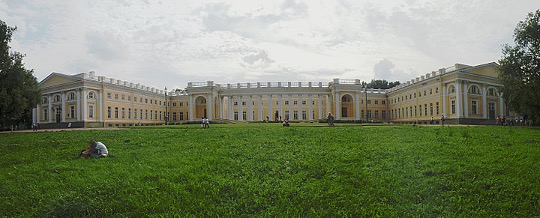
To see rooms inside explore here and click on Palace Tour:
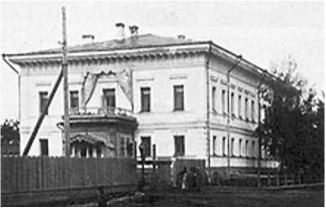
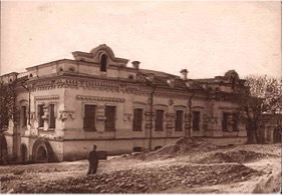
THE EXECUTION OF THE TSAR AND FAMILY
The Russian Imperial Romanov family (Emperor Nicholas II, his wife Empress Alexandra and their five children Olga, Tatiana, Maria, Anastasia, and Alexei) and all those who chose to accompany them into imprisonment—notably Eugene Botkin, Anna Demidova, Alexei Trupp and Ivan Kharitonov, according to the conclusion of the investigator Sokolov, were shot and bayoneted to death in Yekaterinburg on the night of 16–17 July 1918.3
According to the official state version in the USSR, former Tsar Nicholas Romanov, along with members of his family and retinue, was executed by firing squad, by order of the Ural Regional Soviet, due to the threat of the city being occupied by Whites (Czechoslovak Legion). By the assumption of a number of researchers, this was done according to instructions by Lenin, Yakov Sverdlov and Felix Dzerzhinsky.3
AFTER THE EXECUTION
All the bodies were then taken to the Koptyaki forest where they were stripped and mutilated. In 1919, White Army investigation (of Sokolov) failed to find the gravesite, concluding that the imperial family’s remains had been cremated at the mineshaft called Ganina Yama, since evidence of fire was found. In 1979 and 2007, the remains of the bodies were found in two unmarked graves in a field called Porosenkov Log.3
Following the February Revolution, the Romanov family and their loyal servants were imprisoned in the Alexander Palace before being moved to Tobolsk and then Yekaterinburg, where they were killed, allegedly at the express command of Vladimir Lenin. Despite being informed that “the entire family suffered the same fate as its head”, the Bolsheviks only announced Nicholas’s death, with the official press release that “Nicholas Romanov’s wife and son have been sent to a secure place.” For over eight years, the Soviet leadership maintained a systematic web of disinformation as to the fate of the family, from claiming in September 1919 that they were murdered by left-wing revolutionaries to denying outright in April 1922 that they were dead. They acknowledged the murders in 1926 following the publication of an investigation by a White émigré, but maintained that the bodies were destroyed and that Lenin’s Cabinet was not responsible. The Soviet cover-up of the murders fueled rumours of survivors, leading to the emergence of Romanov impostors that drew media attention away from Soviet Russia. Discussion regarding the fate of the family was suppressed by Joseph Stalin from 1938.3
The burial site was discovered in 1979 by an amateur sleuth, but the existence of the remains was not made public until 1989, during the glasnost period. The identity of the remains was confirmed by forensic and DNA investigation. They were reburied in the Peter and Paul Cathedral in Saint Petersburg in 1998, 80 years after they were killed, in a funeral that was not attended by key members of the Russian Orthodox Church, who disputed the authenticity of the remains. A second, smaller grave containing the remains of two Romanov children missing from the larger grave was discovered by amateur archaeologists in 2007.However, their remains are kept in a state repository pending further DNA tests. In 2008, after considerable and protracted legal wrangling, the Russian Prosecutor General’s office rehabilitated the Romanov family as “victims of political repressions”. A criminal case was opened by the post-Soviet government in 1993, but nobody was prosecuted on the basis that the perpetrators were dead.3
Some historians attribute the order to the government in Moscow, specifically Sverdlov and Lenin who wished to prevent the rescue of the Imperial Family by the approaching Czechoslovak Legion (fighting with the White Army against the Bolsheviks) during the ongoing Russian Civil War. This is supported by a passage in Leon Trotsky’s diary. An investigation led by Vladimir Solovyov concluded in 2011 that, despite the opening of state archives in the post-Soviet years, there is yet no written document found that indicates that either Lenin or Sverdlov instigated the orders; however, they did endorse the executions after they occurred. Other sources argue that Lenin and the central Soviet government had wanted to conduct a trial of the Romanovs, with Trotsky serving as prosecutor, but that the local Ural Soviet, under pressure from Left S-Rs and anarchists, undertook the executions on their own initiative due to the approach of the Czechoslovaks. Lenin had close control over the Romanovs although he ensured his name was not associated with their fate in any official documents. President Boris Yeltsin described the killings as one of the most shameful pages in Russian history.3
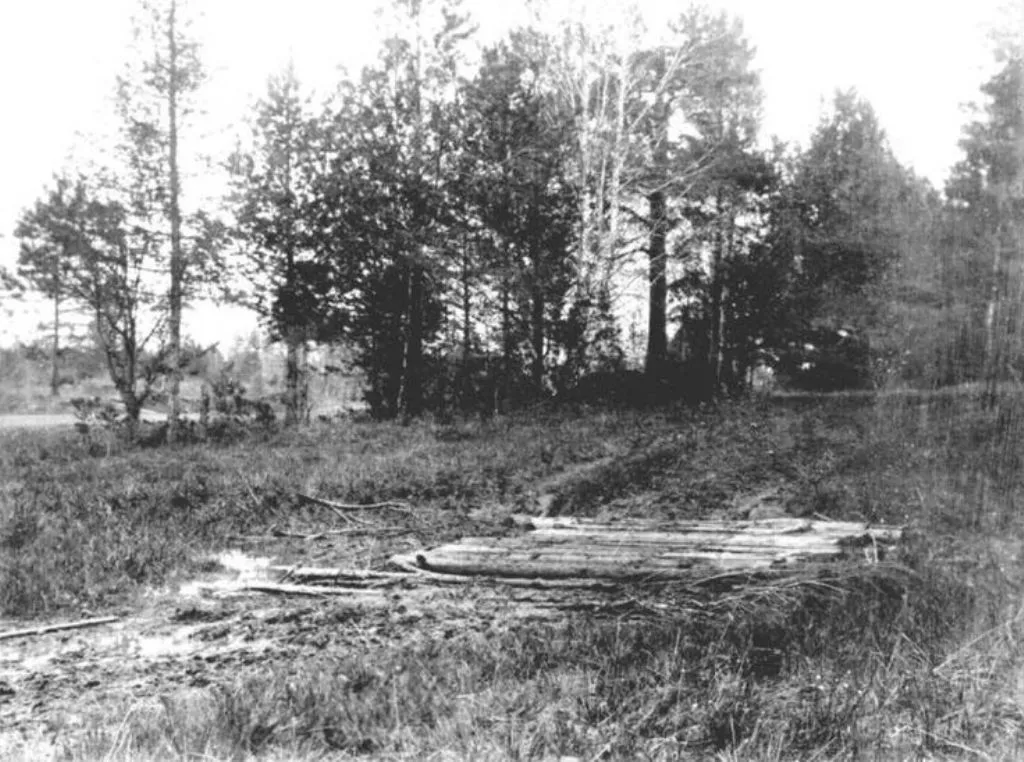
Why did the Bolsheviks have to murder the Tsar and his family?
Because it was personal.
Vladimir Ilyich Lenin’s elder brother, Aleksandr Ulyanov, had been hanged for high treason 1887. He had participated on an Anarchist assassination attempt of Czar Alexander III. While there was no doubt of guilt of Aleksandr Ulyanov, this event shocked young Vladimir for good.4
Vladimir had sworn revenge and he had sworn to exterminate the whole Romanov family. Not only were the Romanovs threat to the Revolution by their mere existence – they would provide a rallying point fot the Legitimists – but Lenin wanted to snuff out the whole Romanov family line. As revenge for his brother.4
This is why the girls had to die.
Not only was the Russian royal family murdered, but also the uncles of the Czar, the younger brother of the czar, Mihail Romanov, and his family. Other Romanovs similarly murdered were:4
- Grand Duke Sergei Mikhailovich, grandson of Emperor Nicholas I, cousin of Czar Nicholas II, 48 years old
- Grand Duchess Elizabeth Feodorovna, widow of Grand Duke Sergei Alexandrovich, sister of Empress Alexandra Feodorovna, 53 years old. She was a nun and retired to convent after the murder of her husband.
- Prince Ivan Konstantinovich, son of Grand Duke Konstantin Konstantinovich who was a grandson of Czar Nicholas I, 32 years old. Cousin of the Czar Nicholas II.
- Prince Konstantin Konstantinovich, son of Grand Duke Konstantin Konstantinovich who was a grandson of Czar Nicholas I, 27 years old. Cousin of the Czar Nicholas II
- Prince Igor Konstantinovich, son of Grand Duke Konstantin Konstantinovich who was a grandson of Tsar Nicholas I, 24 years old. Cousin of the Czar-
- Prince Vladimir Paley, son of Grand Duke Paul Alexandrovich, 21 years old. Second cousin of Czar Nicholas II
- Grand Duke Nikolai Mikhailovich, grandson of Emperor Nicholas I, 59 years old.
- Grand Duke Yuri Mikhailovich, grandson of Emperor Nicholas I and brother of Nicholas above, 55 years old
- Grand Duke Dmitri Konstantinovich, grandson of Emperor Nicholas I, 58 years old
- Grand Duke Paul Alexandrovich, son of Emperor Alexander II, 58 years old. Uncle of Czar Nicholas II
As you can see, Lenin and his clique did a very thorough job on exterminating the Romanov bloodline.4
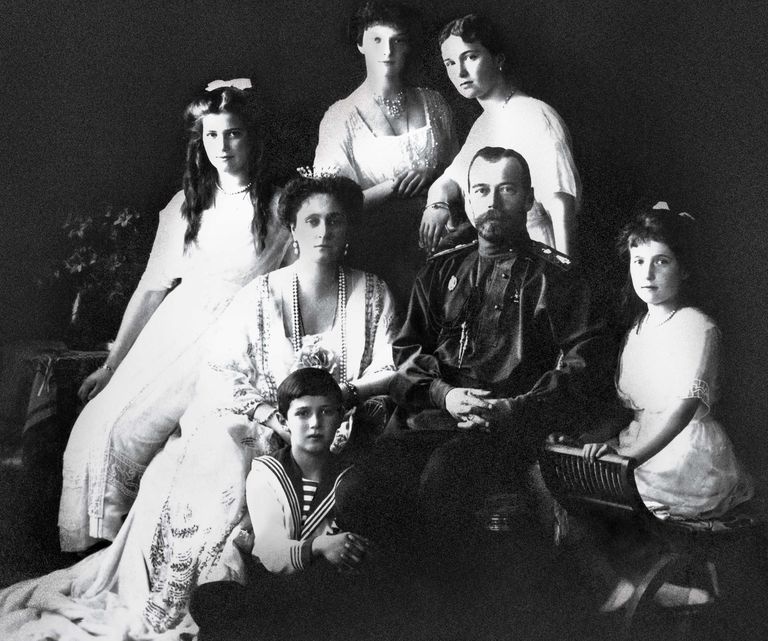
SOURCES
- BOOK: The Last Days of the Romanovs: Tragedy at Ekaterninburg by Helen Rappaport (2008)
- ARTICLE: https://www.nationalgeographic.com/history/magazine/2017/09-10/russian-revolution-history-lenin/#preparingSMS
- WIKIPEDIA: https://en.wikipedia.org/wiki/Execution_of_the_Romanov_family
- ONLINE Q&A FORUM: https://www.quora.com/Why-did-Bolsheviks-have-to-murder-the-Tsar-and-his-family
- ONLINE RESOURCE OF ALEXANDER PALACE & ROMANOV FAMILY DOCUMENTS & DIARIES: http://www.alexanderpalace.org/palace/
- TSAR NICHOLAS II’s 1917 DIARY: http://www.alexanderpalace.org/palace/ndiaries1917.html
- ANASTASIA’s LETTERS IN EXILE: http://www.alexanderpalace.org/palace/anastasiaexile.html
- ONLINE RESOURCE of EXECUTIONERs REPORT:

